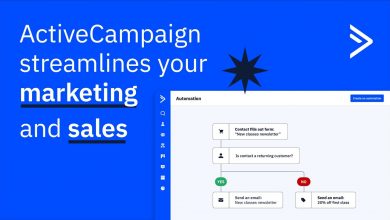Shopify Beginners Guide for Small Businesses
Shopify is a powerful e-commerce platform that can help you create and manage your online store with ease.
 Are you a small business owner looking to expand your reach and start selling online?
Are you a small business owner looking to expand your reach and start selling online?
Shopify is a powerful e-commerce platform that can help you create and manage your online store with ease.
In this beginners guide, we will walk you through the process of setting up your Shopify store and provide tips on how to optimize it for success.
1. Getting Started with Shopify
Before you can start selling on Shopify, you need to sign up for an account. Visit the Shopify website and click on the “Get Started” button. Follow the prompts to create your store and choose a unique domain name.
2. Choosing a Theme
Shopify offers a wide range of free and premium themes to customize the look and feel of your store. Browse through the available options and choose a theme that aligns with your brand and products. Install and activate the theme to apply it to your store.
3. Adding Products
To start selling, you need to add products to your Shopify store. Click on the “Products” tab in your Shopify dashboard and then click on “Add Product”. Fill in the necessary details such as product name, description, price, and images. Organize your products into categories to make it easier for customers to navigate your store.
4. Customizing Your Store
Make your store unique by customizing its appearance and layout. Use the Shopify theme editor to modify colors, fonts, and other visual elements. Add your logo and branding to create a cohesive look. Consider hiring a professional designer if you need help with advanced customization.
5. Setting Up Payment Gateways
Shopify integrates with various payment gateways, allowing you to accept payments from customers. Set up your preferred payment gateway by navigating to the “Settings” tab and selecting “Payment Providers”. Choose the payment options that best suit your business and follow the instructions to connect them to your store.
6. Optimizing for SEO
Improve your store’s visibility in search engine results by optimizing it for SEO. Use relevant keywords in your product titles, descriptions, and meta tags. Write unique and compelling product descriptions that highlight the benefits and features of your products. Install an SEO app to help you optimize your store further.
7. Promoting Your Store
Once your store is set up and optimized, it’s time to start promoting it to attract customers. Utilize social media platforms, email marketing, and content marketing to drive traffic to your store. Consider running targeted ads on platforms like Facebook and Google to reach a wider audience.
By following this beginners guide, you’ll be well on your way to creating a successful Shopify store for your small business. Remember to regularly update your products, analyze your store’s performance, and adapt your marketing strategies to stay ahead in the competitive e-commerce landscape.




